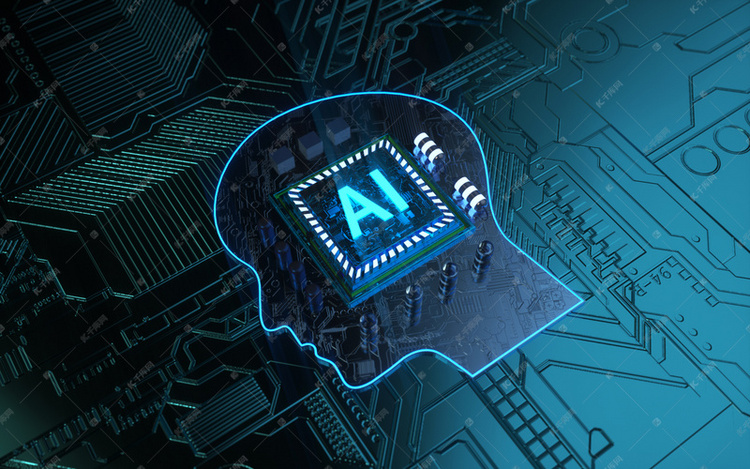Embodied intelligence: A new perspective to subvert traditional AI

With the rapid development of science and technology, artificial intelligence (AI) is changing all aspects of our lives at an alarming rate. However, with AI constantly running forward, traditional AI theory and application slowly revealed some shortcomings. At this time, a called "embodied intelligence" appeared, with its unique vision and far-reaching significance, into our line of sight. It is not simple, it not only brings the definition and application of artificial intelligence to a new level, but also points to a new development of intelligent systems in the future.
Definition and background of embodied intelligence
Embodied Intelligence is the ability to achieve intelligent actions and decisions through the interaction of the body and the environment. Unlike traditional AI, which relies solely on pure computation and algorithms, embodied intelligence emphasizes the ability of the agent to actively learn and adapt in the actual environment. The key to this idea is that intelligence comes not just from large-scale data processing and complex algorithms, but more importantly from interaction with the environment and the accumulation of experience.
The concept first emerged from the intersection of cognitive science, psychology, and robotics. The study found that the intelligence of an organism is not only the computational power of the brain, but also closely related to various parts of the body and the interaction with the environment. To put it bluntly, people's thinking, perception and movement are a whole, so that they can form more complex and flexible intelligent behavior. In this context, the idea of embodied intelligence began to slowly develop, but also used in many fields such as robots and automation systems.
The core features of body intelligence are adaptability, situational awareness and interaction, which make it particularly advantageous when doing complex tasks. Let's start with adaptive, embodied intelligent systems can adjust their behavior according to changes in the environment. By getting real-time data from sensors, and then using that data to make decisions at the moment, the agent can flexibly deal with a variety of changing environments. When a robot walks, it can feel the situation on the ground in real time, and then adjust its pace to maintain its balance so as not to fall.
Then there is situational awareness, embodied intelligence is particularly focused on perception, this agent is not only by image or text data processing, but also through a number of sensors to collect environmental information. This high level of situational awareness allows intelligent systems to better understand the world around them and make more appropriate responses.
Finally, the ability to interact, embodied intelligence emphasizes the interaction between people and people, people and machines, machines and machines. In this process, agents communicate not only through data and algorithms, but also through body movements, postures, and voice and other ways to convey information. This diversity of interactions allows embodied intelligence to play a role in a wide variety of scenarios.
The application of embodied intelligence in different fields. The concept of embodied intelligence is being put into many industries, driving a new wave of technological innovation. These applications demonstrate the broad potential and value of embodied intelligence.
Medical field
Intelligent robots can accompany patients and help them with rehabilitation training. For example, through embodied and intelligent robots, patients can receive physical therapy specifically tailored to them. These robots can monitor the patient's physical condition and mood in real time, and then adjust the treatment plan for better recovery. This intelligent, personalized medical experience not only improves the efficiency of treatment, but also makes patients more satisfied.
Intelligent manufacturing
Intelligent equipment can work closely with workers on complex production lines. Just like in a car factory, embodied robots can perform assembly tasks alongside human workers. Through direct physical interaction, these robots will not only increase productivity, but also reduce the risk of accidents and ensure safe and effective human-machine collaboration.
Education field
Embodied intelligence also shows great application potential. With the context-aware and adaptive learning capabilities of teaching robots, students can have a more vivid and flexible learning experience in interaction. Based on student feedback and learning progress, these robots can adjust the teaching method at the moment, making the learning process more targeted and personalized.
Home service
Embodied smart home devices can provide smarter services by sensing the behavior and needs of the family. For example, the embodied intelligent home assistant can automatically adjust the lighting, temperature and household appliances according to the activities of the family, making the place more comfortable and convenient.
However, although embodied intelligence has many benefits, there are still many technical problems in the process of realization. The most important are these:
The first is that sensor technology needs to improve. Embodied intelligence depends on the real-time perception of the environment, which requires high-precision sensor technology support. Although the sensor technology has made some progress, but in different environments and scenarios, adaptability and stability must be improved.
Second, complex data processing capabilities need to be enhanced. The intelligent decision-making process depends on the processing of many real-time data, which not only requires high computing power, but also needs more effective algorithms to support the adaptive and learning ability of the system.
Finally, human-computer interaction is more natural. Although embodied intelligence emphasizes human interaction, that rich and natural form of interaction is still being studied. How to design a more natural and more humanized way of interaction, so that the agent can better understand and respond to the needs of people in different scenarios, this is still a problem to be carefully considered.
The prospects for the future. Embodied intelligence, as a new perspective in the field of artificial intelligence, is bringing new vitality to many industries. With the continuous progress of technology, there will be more and more intelligent application scenarios, and the intelligent services it brings will definitely change our lifestyle and work mode. In this context, the integration of ideas and technologies will promote the development of embodied intelligence in a more complete and efficient direction.
In addition, Samsung will invest more money in the ecosystem and work with software and hardware partners to develop more competitive solutions. Through open cooperation, Samsung wants to work with everyone to push the innovation of the entire industry and provide customers with better products and services.
At this critical time of change, Samsung not only makes great efforts in the pursuit of technology, but also pays special attention to the sensitive grasp of market dynamics, in order to be ahead in the future competition. As GAA technology becomes more and more mature, Samsung's 2nm process chip strategy will have a profound impact on the entire semiconductor industry and push forward a new generation of information technology.
관심을 가질만한 제품
 |
TPCM-2.4-5 | CMC 2.41MH 5A 2LN TH | 6894 More on Order |
 |
62054-P2S02 | XFRMR TOROIDAL 15VA CHAS MOUNT | 3526 More on Order |
 |
62051-P2S02 | XFRMR TOROIDAL 15VA CHAS MOUNT | 3312 More on Order |
 |
62045-P2S02 | XFRMR TOROIDAL 10VA CHAS MOUNT | 2430 More on Order |
 |
62044-P2S02 | XFRMR TOROIDAL 10VA CHAS MOUNT | 6048 More on Order |
 |
62034-P2S02 | XFRMR TOROIDAL 7VA CHAS MOUNT | 7938 More on Order |
 |
62021-P2S02 | XFRMR TOROIDAL 5VA CHAS MOUNT | 5058 More on Order |
 |
62012-P2S02 | XFRMR TOROIDAL 3.2VA CHAS MOUNT | 3204 More on Order |
 |
62005-P2S02 | XFRMR TOROIDAL 1.6VA CHAS MOUNT | 7668 More on Order |
 |
62075-P2S02 | XFRMR TOROIDAL 35VA CHAS MOUNT | 7308 More on Order |
 |
62073-P2S02 | XFRMR TOROIDAL 35VA CHAS MOUNT | 5292 More on Order |
 |
70074K | XFRMR TOROIDAL 35VA THRU HOLE | 6840 More on Order |
 |
70072K | XFRMR TOROIDAL 35VA THRU HOLE | 5634 More on Order |
 |
70043K | XFRMR TOROIDAL 10VA THRU HOLE | 5562 More on Order |
 |
70024K | XFRMR TOROIDAL 5VA THRU HOLE | 8748 More on Order |
 |
70014K | XFRMR TOROIDAL 3.2VA THRU HOLE | 5562 More on Order |
 |
62082-P2S02 | XFRMR TOROIDAL 50VA CHAS MOUNT | 4986 More on Order |
 |
62033-P2S02 | XFRMR TOROIDAL 7VA CHAS MOUNT | 6480 More on Order |
 |
62084-P2S02 | XFRMR TOROIDAL 50VA CHAS MOUNT | 7284 More on Order |
 |
62060-P2S02 | XFRMR TOROIDAL 25VA CHAS MOUNT | 23778 More on Order |
 |
70064K | XFRMR TOROIDAL 25VA THRU HOLE | 13758 More on Order |
 |
70034K | XFRMR TOROIDAL 7VA THRU HOLE | 8088 More on Order |
 |
AC1050 | CURR SENSE XFMR 50A T/H | 7362 More on Order |
 |
AC1010 | CURR SENSE XFMR 10A T/H | 5963 More on Order |









